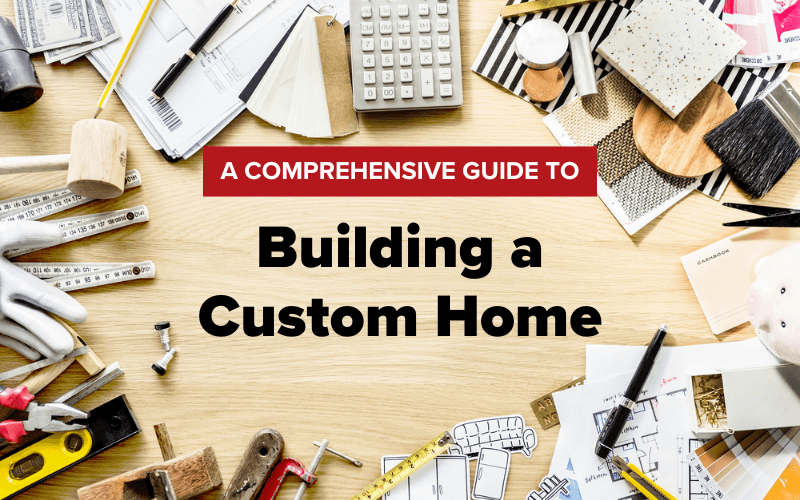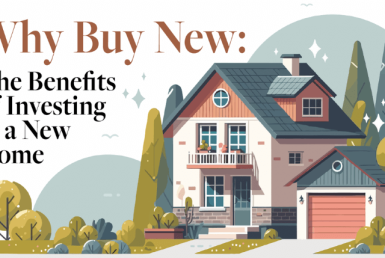Guide to Building a Custom Home
Building a custom home is a dream come true for many, offering the opportunity to create a living space tailored to individual preferences and needs. However, embarking on this journey requires meticulous planning, thoughtful financing, and a seamless closing process. In this article, we will outline the essential steps involved in building a custom home, from inception to completion.
GET PRE-QUALIFIED
Find out what size / price of home you are eligible for based on your financial qualifications. Most mortgage lenders offer free pre-qualification, and knowing what you can afford will serve as a basis for the size and price of a home you can build.
CHOOSE YOUR HOMESITE:
Choose the lot and/or neighborhood where you wish to live and that is within your price range. Make sure the lot you have selected meets all your requirements, such as square footage of your homeplans, and your budget.
CHOOSE YOUR BUILDER:
This is probably the most important step and one that will determine the quality of your custom home. Do your homework. Look for a builder with a good reputation and the experience of building homes like the one you want. Most builders only build to minimum code standards. Find one that builds verified high-performance homes that are superior to minimum code-built homes. Look for builders who are members of the ENERGY STAR®, BUILT TO SAVE®, or AEP Texas High-Performance home programs.
CONCEPTUALIZATION AND PLANNING:
The first step in building a custom home is to conceptualize the design and layout. Engage with architects and designers to transform your ideas into tangible plans. Most builders offer this as an in-house service. Consider factors such as the size, style, and specific features you want to incorporate. A deposit will be required by the builder (amount will vary) to start working on the home’s design and the elevations.
Find a Mortgage Lender
Start your search for mortgage lenders
BUDGETING AND FINANCING:
Once the design is finalized, it’s crucial to determine a realistic budget for the project. Apart from construction costs, factor in other expenses like permits, taxes, and utility connections. Financing options may include a construction loan (interim financing) that will convert to a permanent loan once the home is built. You may also consider the one-time close loan which is a construction loan and a permanent loan with one closing to fund the project. Talk to your mortgage lender to find out which financing option is best for you.
COMPLIANCE WITH BUILDING CODES:
Ensure you or your builder obtains all necessary permits and clearances from local authorities. Compliance with zoning regulations and building codes is critical to avoid delays and legal issues during and after the construction process. Ask if your home will be built in compliance with the State’s energy code (2021 IECC). Not all builders comply with the State’s energy code. The best way to be sure is to ask that your home be verified as a high-performance home in the ENERGY STAR®, BUILT TO SAVE®, or AEP Texas High-Performance home programs.
REGULAR INSPECTIONS:
Throughout the construction process, local building inspectors will conduct regular inspections to ensure that the work complies with safety and quality standards. Addressing any issues flagged during inspections is essential to maintain the project’s momentum. Homes in high-performance homes programs require a thermal bypass inspection after the home is insulated but before the drywall is put in. These programs also require home energy efficiency testing once the home is completed to determine if it qualifies for the high-performance home certification.
CHOOSING FINISHES AND FIXTURES:
As the construction progresses, you’ll have the opportunity to select finishes, fixtures, and other personalized elements for your custom home. From flooring and paint colors to cabinetry and lighting, these choices will contribute to the uniqueness of your new home. Selections for the home are done according to your budget or builder allowances.
INTERIM CLOSING:
You will be notified when closing documents are available for your signature on the interim/construction loan. Once documents are signed, construction can start and can take from 3 to 6 months to complete for final Closing, depending on the size and/or details of the home.
FINALIZING FINANCING:
As construction nears completion, it’s time to transition from the construction loan to a traditional mortgage, known as the end loan unless you opted for the one-time loan financing option. At 3-4 weeks
prior to finishing construction, you need to collect updated information such as pay stubs, bank statements, tax returns/w2’s, and other documents required by the mortgage lender to do a final close on your mortgage. The permanent loan pays off the remaining construction loan balance and becomes the long-term financing for your custom home.
PRE-CLOSING WALKTHROUGH:
Before closing on the property, you will conduct a thorough walkthrough with your contractor to identify any remaining issues or discrepancies that need attention.
CLOSING AND MOVING IN:
At the closing stage, you’ll sign the necessary paperwork and officially take ownership of your custom-built home. You finally get to celebrate this exciting milestone and begin the process of moving into your dream home!
In conclusion, building a custom home involves careful planning, securing financing, and meticulous attention to detail throughout the construction process. While it may require time and effort, the result is a home that perfectly aligns with your vision and lifestyle. With proper planning and execution, building a custom home can be an immensely memorable, happy, and rewarding experience.
Find a Mortgage Lender
Start your search for mortgage lenders
© RGV New Homes Guide, 2023. Unauthorized use and/or duplication of this material without express and written permission from this site’s author and/or owner is strictly prohibited. Excerpts and links may be used, provided that full and clear credit is given to RGV New Homes Guide with appropriate and specific direction to the original content.







